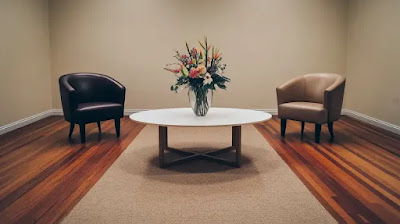DIY Guide for Installing Reclaimed Hardwood Flooring
- Get link
- X
- Other Apps
Installing reclaimed hardwood flooring requires careful planning and precision to ensure it looks great and lasts for years. One of the most crucial steps is preparing the subfloor, as this foundation determines the stability and durability of your new flooring. Leveling the surface, cleaning thoroughly, and making any necessary repairs will set the stage for a smooth installation. Each decision during the process—especially in placing and securing the planks—plays a key role in both the final look and the long-term performance of your flooring.
Preparing the Subfloor
The first step in any successful reclaimed hardwood flooring project is ensuring the subfloor is properly prepped. A level, solid surface is essential for preventing future issues like warping or gaps.
Use a level to identify uneven areas that may require sanding or filling with a self-leveling compound. Inspect the subfloor for any signs of rot or damage—any structural weaknesses should be repaired before installation begins. Make sure the surface is clean and free of dust or debris to allow adhesives to bond effectively.
It’s also important to test for moisture, as excess moisture can damage the wood over time. Aim for moisture levels below 12% to protect your flooring investment and ensure a smooth installation.
Installing the Hardwood Planks
With the subfloor ready, the next step is installing the reclaimed hardwood planks. Careful attention to detail ensures a seamless and professional appearance.
Start by laying the straightest planks along the most visible wall to create a clean reference line. Stagger the joints in each row by at least six inches to increase strength and create a visually appealing pattern. Use a tapping block to snug each plank into place, avoiding gaps where moisture could seep in.
Check alignment regularly throughout the installation, as small mistakes early on can impact the entire project. Taking your time ensures the planks fit together perfectly, achieving the refined and cohesive look that reclaimed hardwood flooring offers.
Sealing and Protecting the Floors
Once the installation is complete, sealing and finishing the floors is essential to protect the wood and maintain its unique character. The right finish not only safeguards the planks from wear but also enhances their natural beauty. Depending on your aesthetic preference and the room’s usage, select a finish that suits your needs.
| Finish Type | Key Benefits |
|---|---|
| Polyurethane | Tough, water-resistant |
| Wax | Natural look, easy to touch up |
| Oil | Accentuates wood grain |
| Shellac | Eco-friendly, quick-drying |
| Acid-Cured | Extremely durable finish |
Each finish offers distinct advantages, so consider how much foot traffic the area will receive. A well-chosen sealant will preserve the unique charm of your reclaimed hardwood floors, ensuring they stay beautiful and functional for years to come.
- Get link
- X
- Other Apps


Comments
Post a Comment